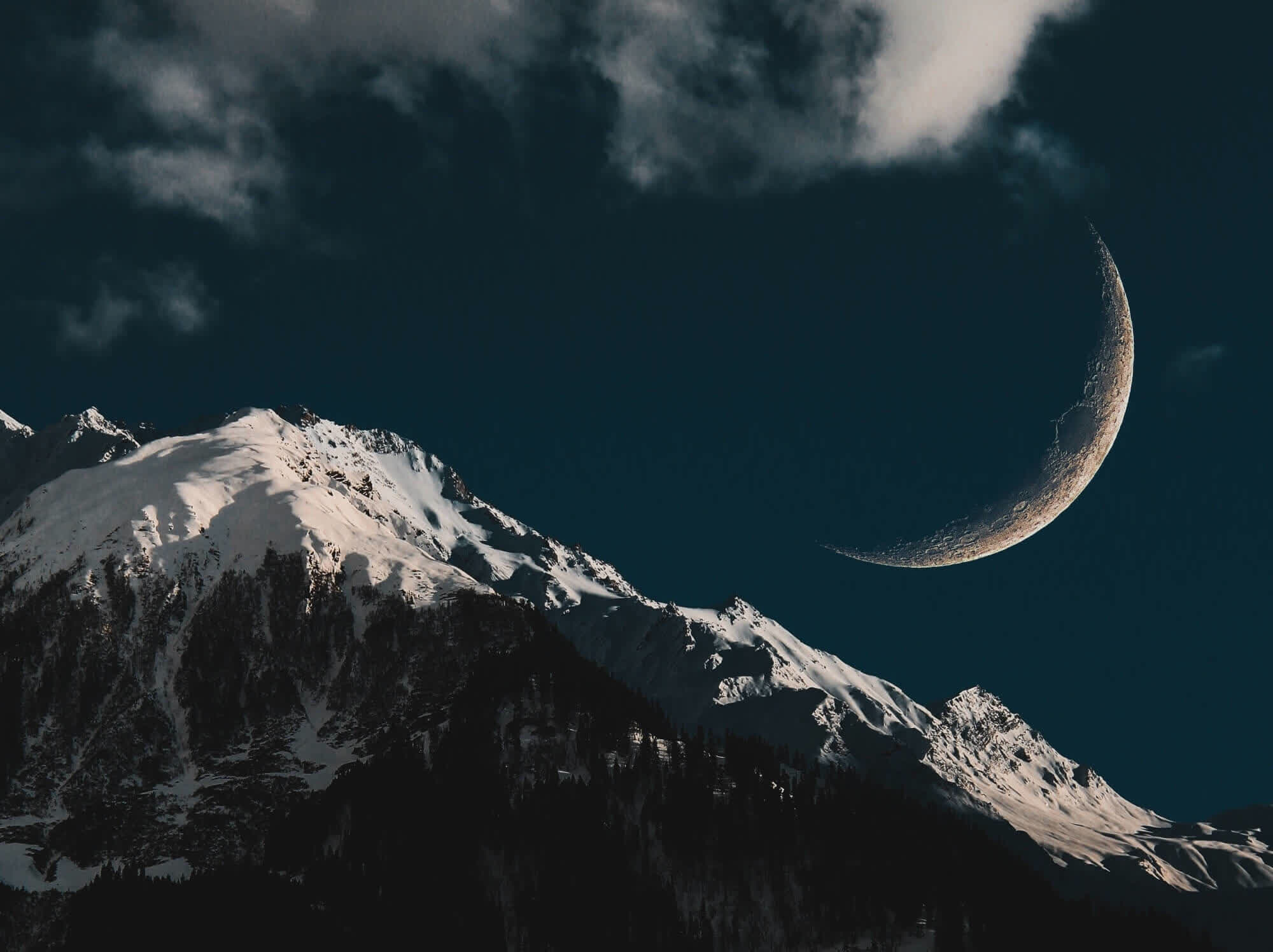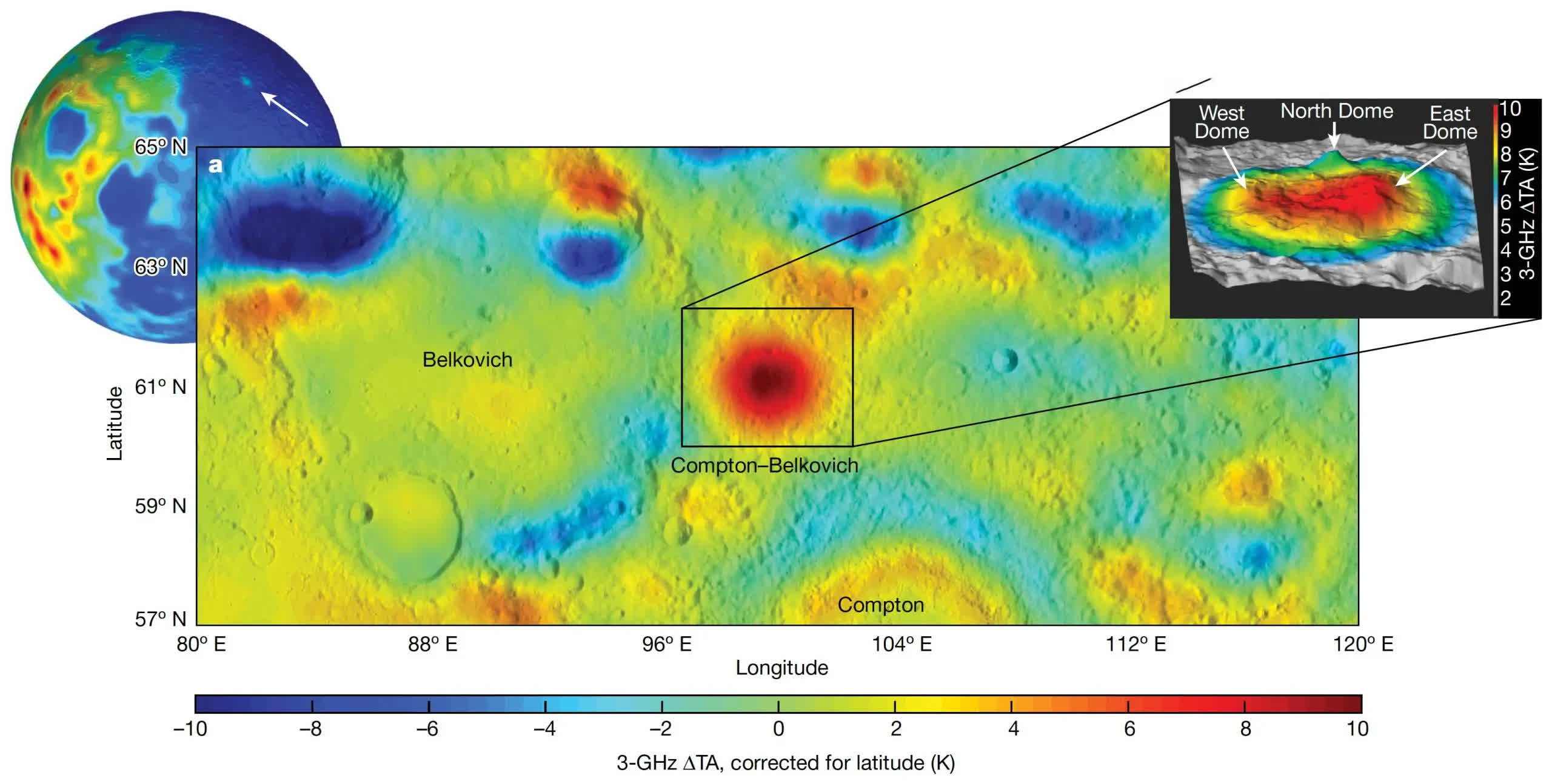In context: The Moon is tidally locked to Earth, which means it always shows the same hemisphere to our planet while the other hemisphere stays in the dark. Compared to the near side humanity has been studying for thousands of years, the dark side of the Moon features rugged terrain, numerous impact craters, and distinctive phenomena such as the Compton-Belkovich Thorium Anomaly

A recent study published in Nature utilized a "new instrument type" aboard the Chinese Chang'E 1 and 2 orbiters. The study revealed that the Compton-Belkovich Thorium Anomaly holds a fascinating secret about the Moon's volcanic history. This concealed feature, located beneath the lunar surface on the far side of our satellite, contains a unique type of material never before found outside of Earth.
Scientists estimate that the Moon has not displayed any signs of active volcanism for the past 3 to 4 billion years. However, the Compton-Belkovich feature has long been suspected to be a lunar volcano that was active in the very distant past. The Compton-Belkovich Thorium Anomaly is specifically identified as a granitic batholith, which refers to a sizable intrusion of igneous rocks that formed as magma cooled beneath the Moon's surface.
Scientific data has previously shown that the feature is part of a larger structure of solidified underground magma (which eventually becomes granite) estimated to be approximately 50 kilometers in diameter. The structure is rich in Thorium radioactive sediments, and thanks to the microwave instruments available on the two Chinese Moon orbiters we now know that it's still generating heat despite being a "dead" volcano for billions of years.
Microwave wavelengths, a distinctive measurement capability of Chang'E 1 and 2, extend beyond infrared in the electromagnetic spectrum. These wavelengths can be utilized to measure the temperature beneath the Moon's surface. Scientists at the Planetary Science Institute (PSI) worked with Dr. Jianqing Fang, who arrived in the United States with a J visa, to navigate the data collected and made public by Chinese scientists without the need for a direct collaboration between the two countries.
Matthew Siegler, a senior scientist at the Planetary Science Institute and the main author of the study, highlighted that the new analysis of the lunar granitic batholith beneath the Compton-Belkovich feature represents a remarkable collaboration that exemplifies the fruitful outcomes when science and politics unite.
Historic Apollo missions have provided evidence that the Moon's violent volcanic history mostly resulted from meteorite impacts rather than traditional volcanic eruptions, as observed on Earth. The discovery of a hot spot beneath the Compton-Belkovich Thorium Anomaly now demonstrates that the Moon's internal heat persists due to the presence of radioactive elements concealed within batholith structures.
https://www.techspot.com/news/99437-there-radioactive-hot-spot-far-side-moon.html
